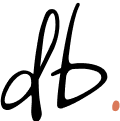The rapid ascent of the blog
You are not reading a blog.
But the blog has taken over the Internet. In 2000, there were a few thousand blogs. As of 2021, there are around 600 million.
Before the blog, homepages had to be manually stitched together by people who knew how to code. As a result they were relatively unique and the authors came up with their own quirky ways of curating the things they thought most interesting.
Today, most people use some form of blogging software. The promise of automated online webpages that you didn’t have to code yourself was too good to miss and this software became a potent democratising force, enabling anyone to write and share their thoughts instantaneously.
This new wave of software quickly landed on the reverse chronological display as a default view. In short, every blog homepage became a list of all posts from newest to oldest and organising it any other way became increasingly difficult.
A tyranny of chronology
It sounds like a trivial and mostly helpful change, but as as Amy Hoy details in her excellent article—How Blogs Broke the Web—it had a profound effect, and something was lost in the move to convenience. The weird, wild web (www) collapsed into a more standarised format.
In this schema, recency is valued above all else. When newer is better, then the stream of content begins to take precedence over the content itself. The stream mustn’t stop. High value content from the past gets quickly lost in the stream and becomes harder for readers to find. Look at this new thing instead!
One result of this pressure is the ascendence of rote “content creation” over written words. To ensure content creation is carried out effectively, “content strategies” must also be employed to please the SEO gods and ensure that your stream remains visible.
Peeking over the garden 🌱
Personally, I’ve felt exhausted with blogging for a while.
Articles are often expected to be polished and adorned with beautiful photography. It takes a lot of work to publish even a half-decent one… and the going wisdom is that this should continue indefinitely, to retain your social standing on the Internet.
No matter what software I used—and even as someone who can code—it also felt difficult to make the website my own: to have a real homepage that welcomed visitors and pushed them in the right direction depending on what they were looking for.
A few weeks ago, whilst pondering on how I would share these writings, I came across the Digital Garden movement. Maggie Appleton, in her brilliant survey of the scene, notes that:
A garden is a collection of evolving ideas that aren’t strictly organised by their publication date. They’re inherently exploratory – notes are linked through contextual associations. They aren’t refined or complete - notes are published as half-finished thoughts that will grow and evolve over time. They’re less rigid, less performative, and less perfect than the personal websites we’re used to seeing.
As a result, websites that identify as digital gardens often have a more wiki-like feel to them; exploring and threading together thoughts together as they arise, without having to knit them into a final form right away. To me, this approach feels more appropriate for an ongoing exploration of topics like contemplation and awakening.
I also enjoy the garden metaphor. A garden is a more personal, organic affair with fully grown plants sitting alongside seedlings. It also takes some of the pressure off, and gets me excited about writing again. Similar to Agile methodologies in software, it encourages shipping earlier which in turn fosters momentum and flow.
How this website is structured
So what can you expect from this website?
The content will be pretty varied, from longer articles to shorter notes that I will refer back to later. Some pieces will be quite polished, others will be more embryonic.
I’m aiming for the section indexes for Practical, Technical and Mystical to be a more curated affair than a simple list of content; a place where I can continually re-tell the ongoing narrative of this website and point people to the right entry points depending on what they’re looking for.
Hey you.
Interested in inner work, wisdom and learning?
